Service Rating | 1,422 reviews
Mon - Fri: 9am - 5:30pm
What is it?
Hyundai’s electric vehicles are some of the very best on the market. Following on from the incredible Ioniq 5 N and the sleek and stylish Ioniq 6, the South Korean firm has really got the EV recipe cracked.
Small affordable electric cars have never really been a thing, until this year, when we have seen a flood of new lower-priced EVs enter the market and Hyundai wants a piece of that action with this – the new Inster.
Cars like the Dacia Spring, Citroen e-C3 and Renault 5 are all small, quirky and interesting-looking electric vehicles, so what about this bold-looking Inster? We’ve been finding out.
What’s new?
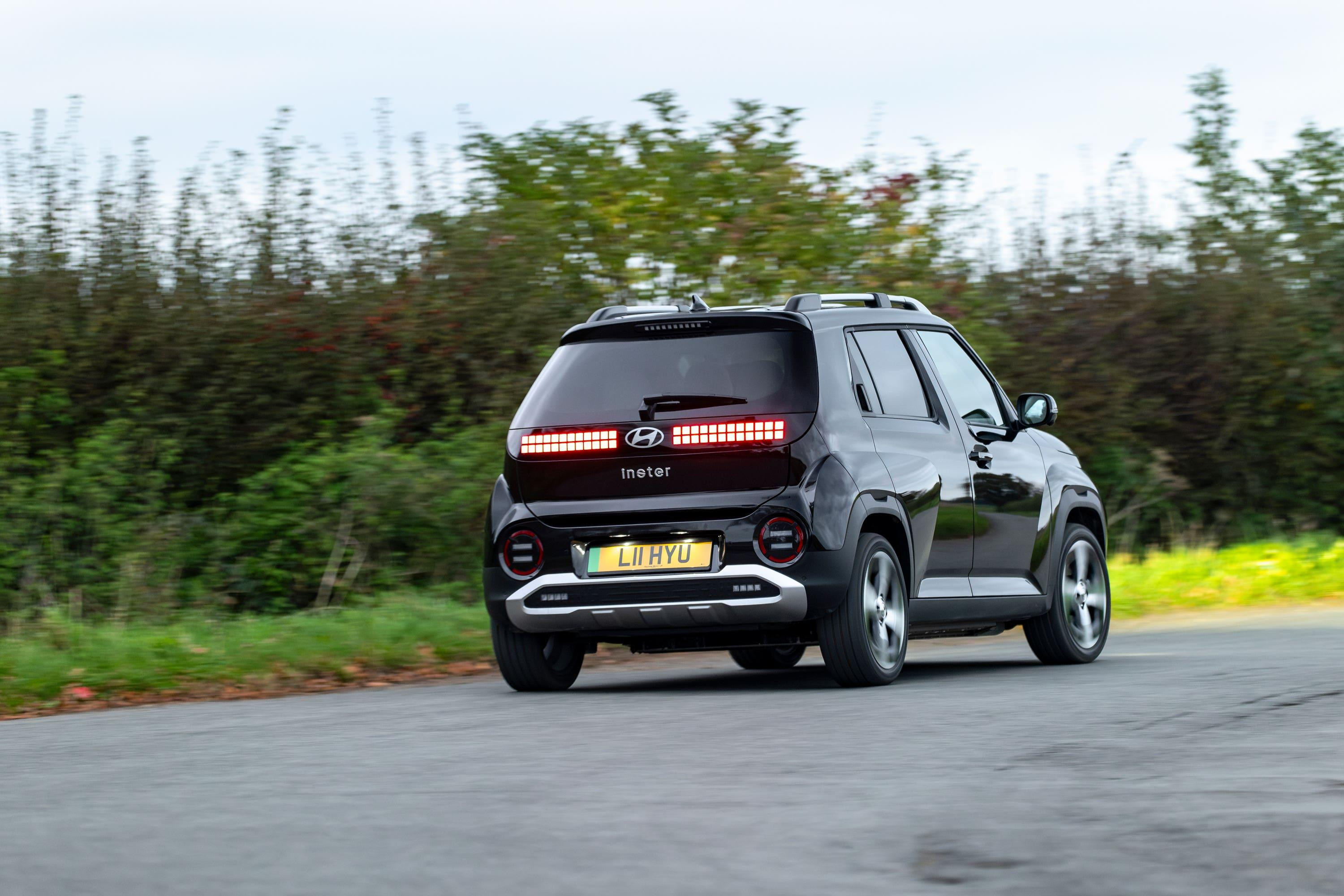
A lot of small cars these days are being overlooked for SUVs, and although the Inster may look like a rough and ready off-roader, it actually is about the same size as Suzuki’s Ignis and is shorter than an MG4.
However, inside there is enough space for four full-sized adults to sit comfortably. All the seats can be folded completely flat to turn the car into a mini camper van and the rear seats slide backwards and forwards for more leg room or boot space. But, Hyundai hasn’t shied away from offering the Inster with limited amounts of equipment levels. In fact, this small car has just as many standard toys from bigger models in the firm’s range.
What’s under the bonnet?
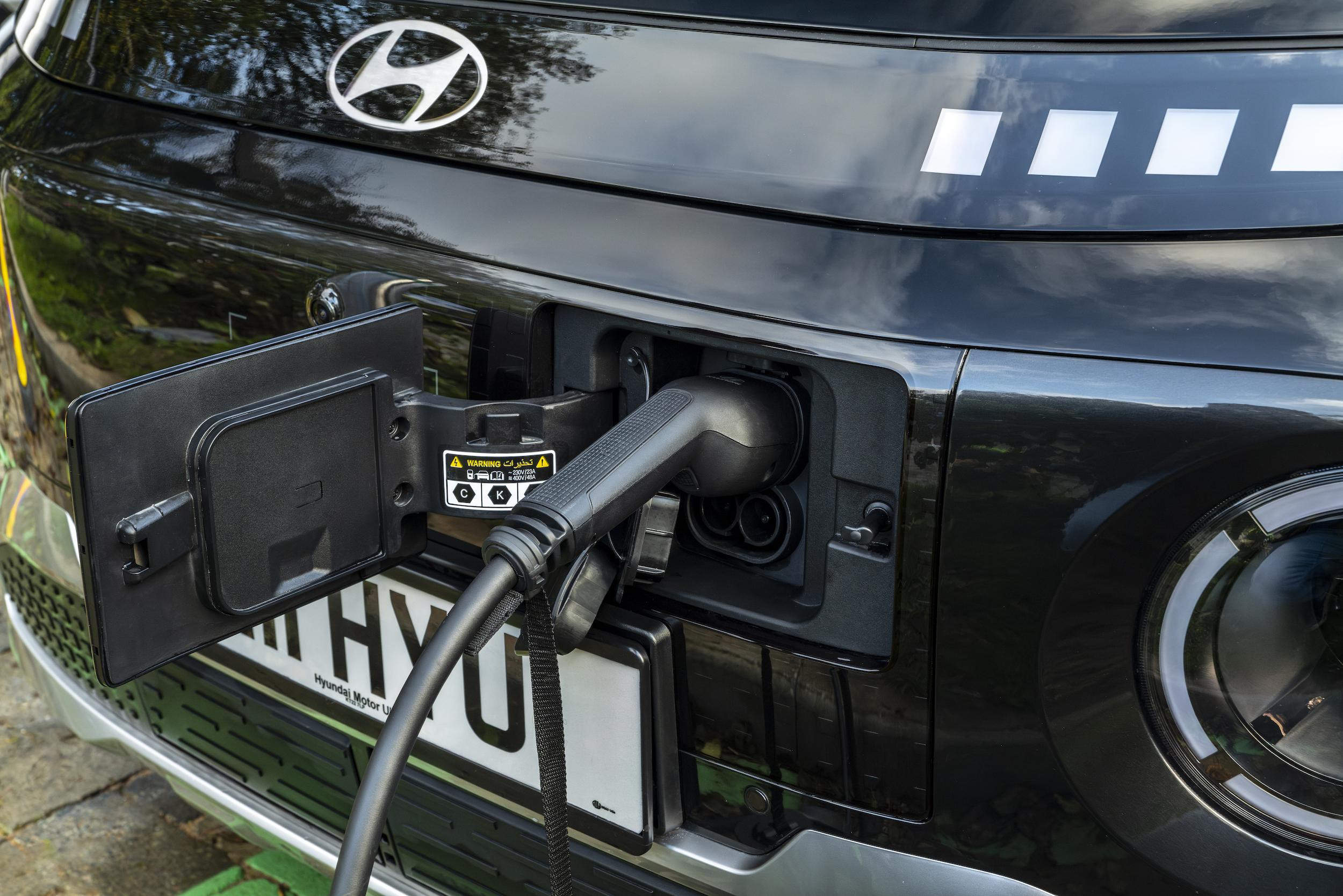
From launch, the Inster will be available with two different battery packs. The entry powertrain is a 42kWh battery pack and electric motor that produces a total of 96bhp. In this guise, Hyundai claims that the car can do up to 203 miles between charge-ups and the car can do 0-60mph in 11.5 seconds.
The second option is a larger 49kWh battery pack that comes with an electric motor that produces 115bhp and its range increases to a claimed 229 miles between trips to the plug. In terms of acceleration, its 0-60mph time improves to 10.4 seconds – but both versions run out of puff at 93mph. What’s more, all Insters come as standard with a heat pump which should make the car easier to live with in winter as it helps warm the car and battery up efficiently to utilise its range to the best possible level.
What’s it like to drive?
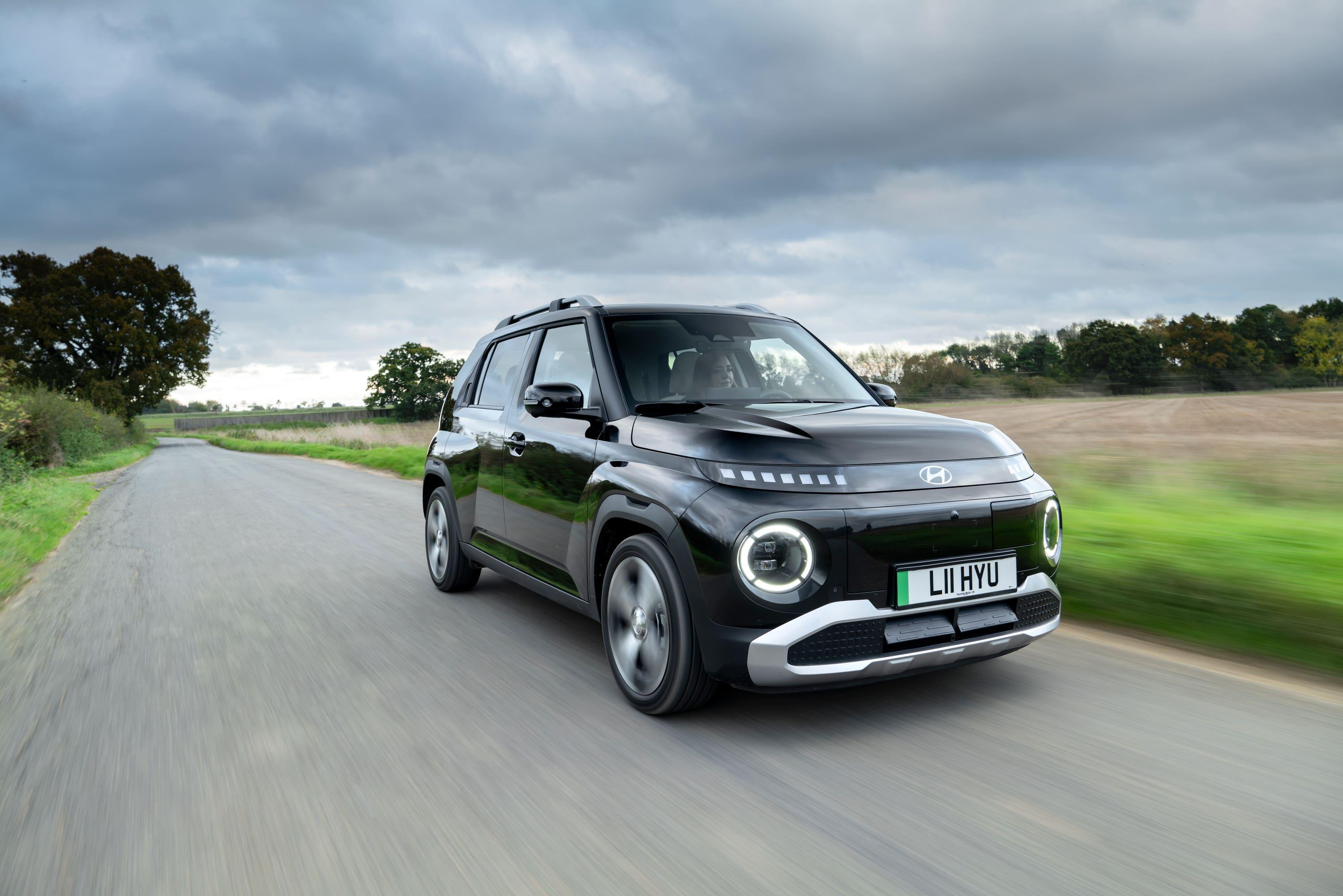
When you get behind the wheel, the taller driving position makes you think you’re driving a car that is a lot larger. It also helps you see out more clearly and the large glass areas also help, here.
The steering has a good feel and is nicely weighted making the car feel a lot more engaging, however, where the car falls down is with the ride comfort which, although isn’t uncomfortable, just doesn’t absorb bumps as well as it could do.
It may not have the most impressive performance figures, but the car doesn’t feel sluggish in any way and its most comfortable environment is in and around town. But, take it out on the motorway, and it can hold its own there, too.
Refinement isn’t bad, with a bit of wind noise entering the cabin, but it’s not intrusive. Plus, the regenerative braking can be controlled via the wheel-mounted pedals, and it allows the car to come to a complete stop making urban journeys even easier.
How does it look?
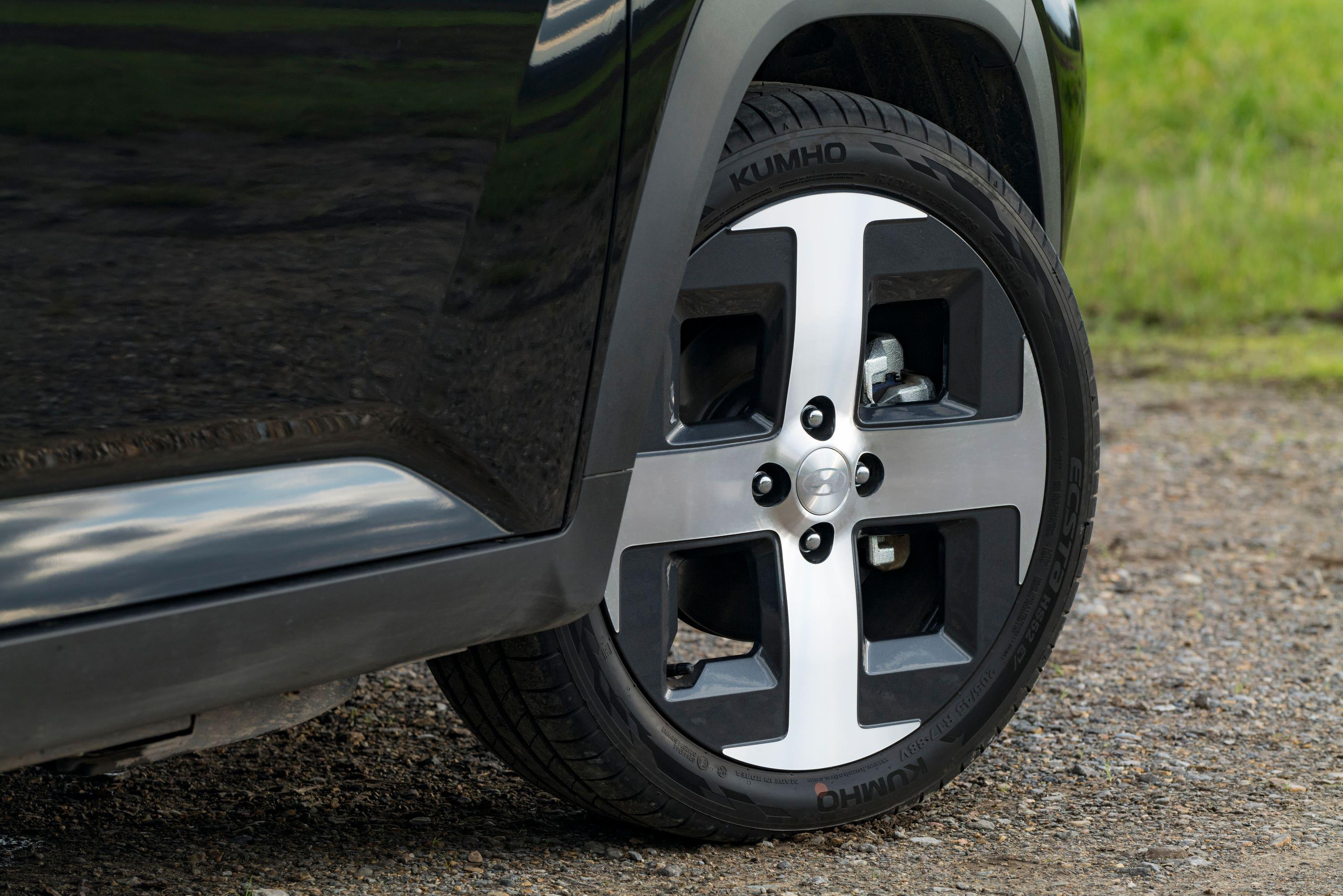
From some angles, this little Hyundai gives off vibes of the Suzuki Ignis with its roof bars and its tall narrow body.
However, look a bit closer and you’ll see the Pixel LED lights – similarly found on the firm’s larger Ioniq 5 and Ioniq 6. The large wheel arches and silver skid plates make it have a rugged and tough off-roader look and at the back, the Pixel theme continues – making the car really stand out from its competition.
Later down the line, Hyundai will launch an Inster Cross, which enhances more off-road type features with chunkier bumpers and an optional roof basket. But, overall the design of the Inster is fresh, quirky and unique.
What’s it like inside?
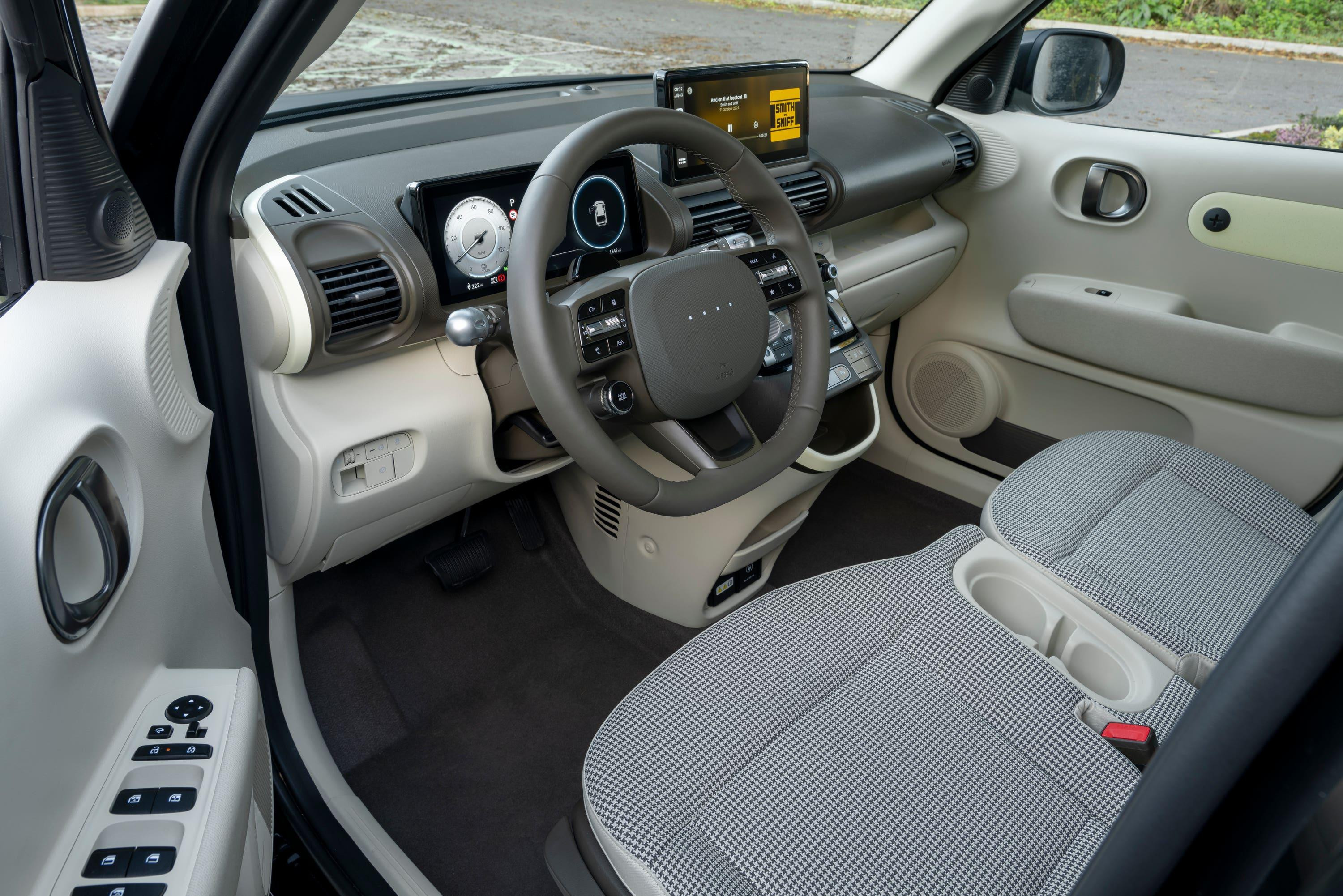
No matter where you look, space really is the Inster’s piece de resistance. It may be a cliche, but it really does have a tardis-like feel with a compact outside yet with a spacious inside feel. The tall body means that headroom is decent for taller passengers and the front seats have a bench style allowing for a cup holder to be positioned in between them. As mentioned above, all the seats can be folded completely flat, but standard boot space stands at 280 litres or 1,059 litres with just the rear bench folded down – which isn’t as good as in a Citroen e-C3, but that is an ever-so-slightly larger car.
Up in the front, the controls are logically laid out with physical buttons, and although the quality of some of the materials are a little bit scratchy and hard in places, it still feels well screwed together and has a nice look to it. Also, the car comes with vehicle-to-load which utilises the car’s battery to plug in domestic appliances.
What’s the spec like?
Here in the UK, there will only be two trim levels to start off with and prices will come in at £23,495 for the basic model and smaller battery pack.
But, equipment levels are still generous with all cars coming equipped with a 10.25-inch touchscreen, digital driver’s display, keyless entry and a rear parking camera and rear parking sensors. If you want the entry-level car with the larger battery, you’ll have to pay an extra £1,550 at £25,045.
Moving up to the ‘02’ specification at £26,745, not only does it come with the 49kWh battery pack as standard but it also boasts features such as a black contrast roof and vehicle-to-grid technology. For most people though, the basic model will be more than acceptable enough.
Verdict
Hyundai really knows a thing or two when it comes to making EVs and the Inster will just boost the South Korean’s reputation even more.
We’ve been crying out for affordable electric vehicles and if you opt for the entry-level model, then it’s a very wise choice as it offers not only superb levels of standard equipment but features necessities like a heat pump and interior space that could shame some cars from the class above – and for that, Hyundai needs a pat on the back for making an affordable EV that you can buy with your heart as well as your head.